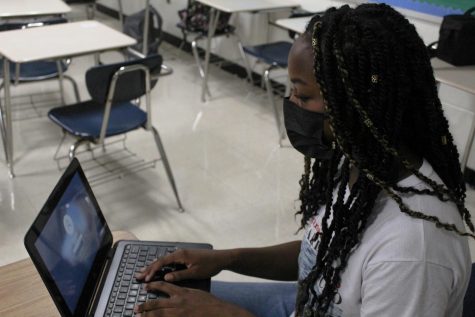Flu or COVID? How to identify and subdue each sickness
As COVID-19 is still in full swing, along with flu season creeping upon us, many students and staff may be concerned with whether their symptoms fall in the lines of the virus that has shaped 2020 or the virus that spikes every winter.
The Coronavirus and the flu are both respiratory sicknesses, but the Coronavirus spreads much quicker than the flu; however, not all cases of COVID-19 will provide noticeable symptoms. While some cases are asymptomatic, many can show symptoms that reflect those of the flu.
A few of the common symptoms between COVID-19 and the flu include fever or a feverish/chills feeling, cough, shortness of breath or difficulty breathing, fatigue, sore throat, runny or stuffy nose, muscle pain or body aches, and headaches (CDC).
The flu has been less severe compared to the highly symptomatic cases of COVID-19, which Healthline has found that 20 percent of all cases are asymptomatic, whereas about 16 percent of flu cases are asymptomatic.
Along with the flu, other seasonal illnesses that have similar symptoms to the flu and the coronavirus are seasonal allergies and a common cold.
Allergies that correspond with changing weather have many similar symptoms to the flu and COVID-19, but according to Healthline, the symptoms that are more severe with allergies include sneezing, wheezing, and coughing.
A common cold has an easier “self-diagnosis” compared to COVID-19, oftentimes causing more congestive symptoms rather than respiratory symptoms, while COVID-19 focuses on the respiratory tract. Of course, consulting with a doctor or medical professional is safer than a “self-diagnosis.”
Patients that believe they have COVID-19 or the flu can get tested for each respective virus, but at the time this article was published, only the flu has a corresponding vaccine that prevents the virus from spreading throughout their body.
Although these illnesses are not all preventable with a single treatment, one could subside or negate the symptoms with separate processes.
The CDC has published ways for prevention and inhibiting the spread of COVID-19, including social distancing 6 feet apart, wearing a face mask that covers the nose and mouth, and washing hands frequently after contact with surfaces that may have been touched by others.
Certain strains of the flu can be prevented by getting the flu vaccine. Although receiving the vaccine may not entirely prevent contraction of the virus, the vaccine helps reduce the severity of the symptoms.
Both seasonal allergies and common colds are less preventable than the flu, however, taking specialized medicine for each respective illness will help reduce the length of sickness and the symptoms that follow the diagnosis






